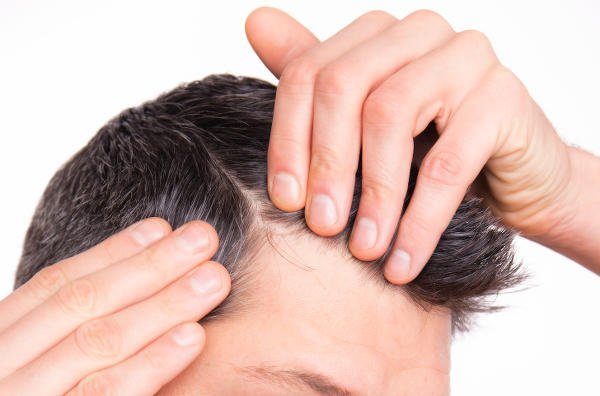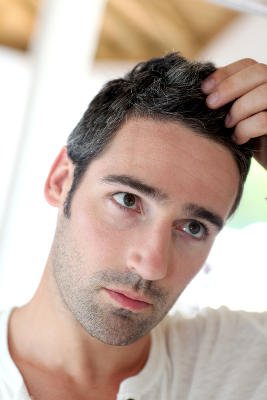In cases of unsatisfactory hair graft results, the surgeon should ask the patient what bothers him the most, define priorities and inform him of what can realistically be achieved.
The problems that concern patients the most are:

Corrective surgery maximises hair graft results
The bald ring around the graft is the hardest problem to resolve because the donor site is usually exhausted.
A dense hairline can be resolved by extracting the grafts with a micropunch and redistributing them. This can simultaneously resolve the problem of a hairline that is too far forward. Camouflage is achieved by placing the grafts obtained from the anterior line in front of the larger grafts. This technique usually requires more hair that can be harvested from the occipital donor site.
On occasion, the patient cannot comb his hair properly because it's too spiky or curly (kinky hair) making hard to style as it is wiry due to the scars surrounding the micrograft. This can only be resolved by placing small micrografts between the wiry hairs. If the problem is hair growing in the wrong direction, the hair should be removed using the FUE technique and reimplanted in the correct direction.
The two most effective and common techniques for graft correction is placing more hair between the grafted hair in the form of micrografts (camouflage) and remove certain grafts to reimplant them in the correct position and direction of hair growth in follicular units (extraction and reimplantation). On occasion, a complementary solution is the removal of part of the initially grafted hair using a laser technique.
The camouflage technique consists of creating an area with greater density of grafted follicles, following the natural angle of hair growth and controlling the direction and weight of hair to increase the sensation of hair density.
Camouflage is always performed by implanting micrografts between the thick grafts in bunches, leaving these to create a filling effect or hair mass.
Camouflage is created by designing transition areas between the existing thick grafts. This improves the result with the least number of grafts possible and allows for a better prognosis of graft viability, because they are placed in an area of healthy, previously untouched skin.
Camouflage does not change the position of the hairline, rather it is used to give a more natural appearance to the area by creating a transition between the hairless forehead and the abnormal grafts.
The transition area is formed better with follicular units, given that they provide perfect camouflage with small, additional wounds on the recipient skin and assure a more natural result. When creating a transition area, it should be performed as thoroughly as possible to assure a natural camouflage result.
Although the degree of camouflage intensity varies depending on the density and thickness of the macrografts, as well as their extension. This is also conditioned by patient hair and skin colour, requiring more camouflage the higher the contrast between hair and skin is. Another factor is if the hairs grafted in bunches are much thicker than the residual hair in the temporal region.
Grafts are placed in the chosen locations to prevent focal density of the bunches and create areas of growing density that eliminate graft symmetry. Sometimes creating a widow's peak on the hairline is useful. This breaks the artificial uniformity of previous grafts.

The camouflage tecnique increases the sensation of hair density
When camouflage is insufficient for an improved appearance, grafts are removed and reimplanted. This technique, also known as linear or micropunch excision, rearranges the grafts in areas where the result is more natural and aesthetic.
Extraction and reimplantation are usually necessary when macrografts are too large, the hairline is too low or thick or the crown has a low transplant density and there is not enough donor hair to redensify it.
It is also used as a supplementary solution when the grafted hair direction is incorrect or when density in the area is so high that camouflage cannot or should not be conducted.
In these cases, extraction of the macrografts is practically mandatory.
In most cases, camouflaging is required once the extraction and reimplantation has been conducted. Extracting prior macrografts after camouflaging is a complex task and puts the newly implanted micrografts at risk.
Ideally, all grafted hair should be placed for growth to follow the same direction as the original hair in each area.
It is essential to keep in mind that the graft angle is partially altered during scar formation. When the bunches grow in the wrong direction but removal and relocation is not considered, camouflage is conducted by gradually angulating the new grafts, placing them closest to the parallel bunches at an angle until the right direction in which they are further away from each bunch is achieved.
Hair should be implanted in the form of a full swirl in the area of the crown, either by following the direction of existing hair or creating a new one. The advantage is naturalness and better coverage as the hair grows in titled, rotating its direction.
Playing with the placement of the follicles to handle hair weighting is one of the resources that gives best results in correcting hair grafts. This is achieved by placing the new grafts closer than normal in certain selected positions or using larger follicular units (with more follicles) in those areas.
In virgin hair grafts, this technique is performed to generate hair weighting.
Weighting is used to improve the naturalness of the result in some patients, especially those who have an impoverished donor site, since it optimises the effectiveness of each follicular unit that is placed for camouflage.
Many of the corrections performed are based on removing thick and poor implanted grafts and relocating them in a less visible manner. The worst limitation and the hardest to remedy is the existence of a poor donor site.
For this reason, it is imperative to perform a correct follicular unit count and quality of the donor site to target patient expectations of the correction and be able to plan the most appropriate strategy for the procedure.
The limitations of the donor site can be classified into:
 It is essential to graduate the level of hair density, number of follicles in each follicular unit and the calibre or degree of hair miniaturisation.
It is essential to graduate the level of hair density, number of follicles in each follicular unit and the calibre or degree of hair miniaturisation.
The average hair density in Caucasians is 2.2 hairs per mm2, but some people have 3 hairs/mm2 or 1.5 hairs/mm2; these are all considered normal densities.
The average follicular units in Caucasians is almost constant at 1 follicular unit per mm2. Therefore, the variable hair density depends on follicular units having 1, 2 or 3 integrated follicles.
Following strip harvesting, follicular unit density is usually reduced to 0.875 units per mm2 due to the tension and stretching of the scalp to close the wound after the strip extraction.
The donor site can reach a minimum density of 0.5 follicular units/mm2 for prior harvests and the current one to be invisible.
The hair shaft diameter is essential and highly conditions the corrective effect aimed for. Hair calibre is less valued than the number of hairs that are to be implanted, even so, it is very important parameter.
The average calibre is 0.06 mm for fine Caucasian hair and 0.14 mm for Asian hair. There is a hair calibre range variability of x5, while the hair density can vary from 150 to 300 hairs per cm2, with a range that only varies x2.
This highlights the importance of hair calibre. Fine, fair hair has a less covering effect than thick, pigmented hair.
In order to harvest a sufficient number of follicular units in a previously used area, it is essential for the donor site to have enough laxity that will allow for new strip harvesting.
The ideal location for the incision on the donor site is between the occipital bulge and the top line of the nape.
In cases where there is not enough laxity to be able to harvest another strip, FUE (Follicular Unit Extraction) may be considered. This technique does not require as much laxity but it can also have its performance affected due to the thinning of the scalp and the high degree of transection that may occur in areas where strips have been previously harvested. This is due to the various scar tractions that can redirect the follicle and hinder its extraction with the micropunch used in FUE.
Prior scarring limits the amount of follicular units that can be harvested due to three reasons:
Sometimes, the macro-punch used formerly produced more subcutaneous cell tissue anchoring to the deeper layers than the scarring of the strip harvesting.
It is important to test skin elasticity before strip harvesting when prior harvests have been conducted on the donor site.
Contact IML now for more information on corrective hair graft surgery.